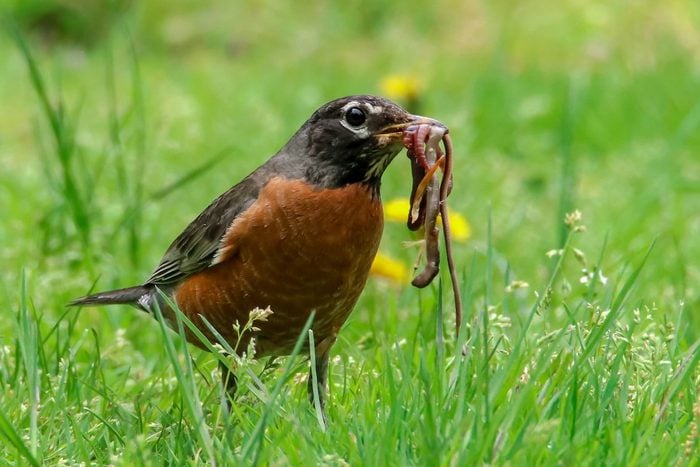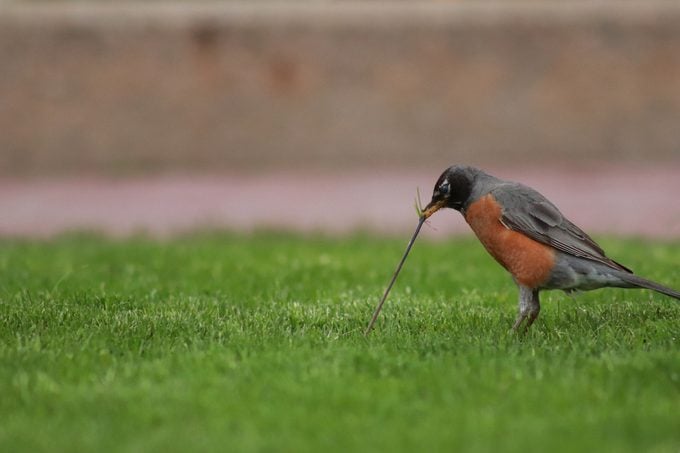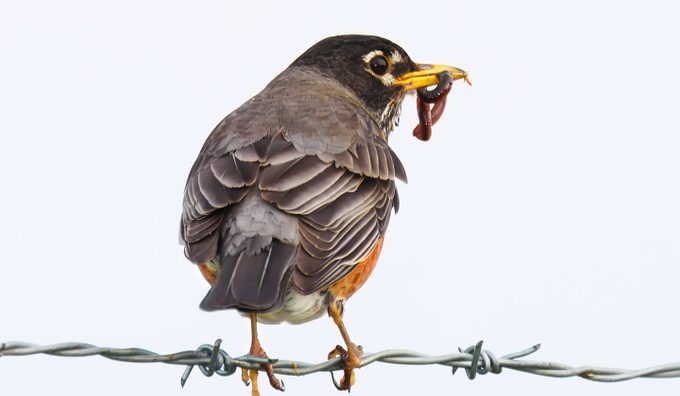
American robins wake up early to eat breakfast — but how do robins find worms in the ground? We chatted with an expert to find out.
Few birds are as closely associated with earthworms as the American robin. These red-breasted backyard favorites are hopping around in the grass and plucking wriggling creatures from the ground. But how do robins find worms? The answer might surprise you. Turns out, a robin’s ability to hunt down worms in your yard relies on a few of its senses — one more than the rest.
Enjoy 15 cheerful robin bird pictures to welcome spring.
How Do Robins Find Worms?

Robin pulling a worm out of the ground
Dr. Kevin J. McGowan, senior course developer and instructor for Bird Academy at the Cornell Lab of Ornithology, says the consensus about this has changed over time. “When I was a kid, we were told they were listening for them,” he says, “or that they were turning their heads, so you could tell that they were listening.” Kevin points out the flaw in that theory: “The problem is that worms don’t make a lot of noise, and the bird’s eyes are on the sides of its head.”
Here’s everything you need to know about robin nests and eggs.
So, Kevin explains, the head-tilting motion isn’t necessarily evidence of a robin listening for a worm. “What it’s doing is it’s getting a very good look with one eye, and then it often turns its head and switches over to the other eye. They’re mostly visual predators, so they’re trying to see things.” He says the robin stops, looks, stops, looks, and then dives forward to get something ahead of it. He calls robins an “ambush predator,” since they flick debris away quickly with their beaks to catch unsuspecting prey.
Wondering how to attract robins to your yard year-round? Find out what foods robins eat.
What Other Senses Do Robins Use?

With that said, it’s possible robins make use of a couple of other senses to find worms; they just aren’t relying on them as heavily as they do their sense of sight. Kevin points out that robins might hear worms to catch them. “If something is making noise, I’m sure they can hear it,” he says. “But they’re not set up to be totally listening predators, the way owls are.”
Kevin also says they might make use of the sense of touch. “When they’re moving stuff, they might very well feel things as well. When they’re swiping their bills through the base layer or through the dirt to uncover invertebrates, they might feel something, too. So that’s another sense they could be employing.”
source: https://www.birdsandblooms.com/







